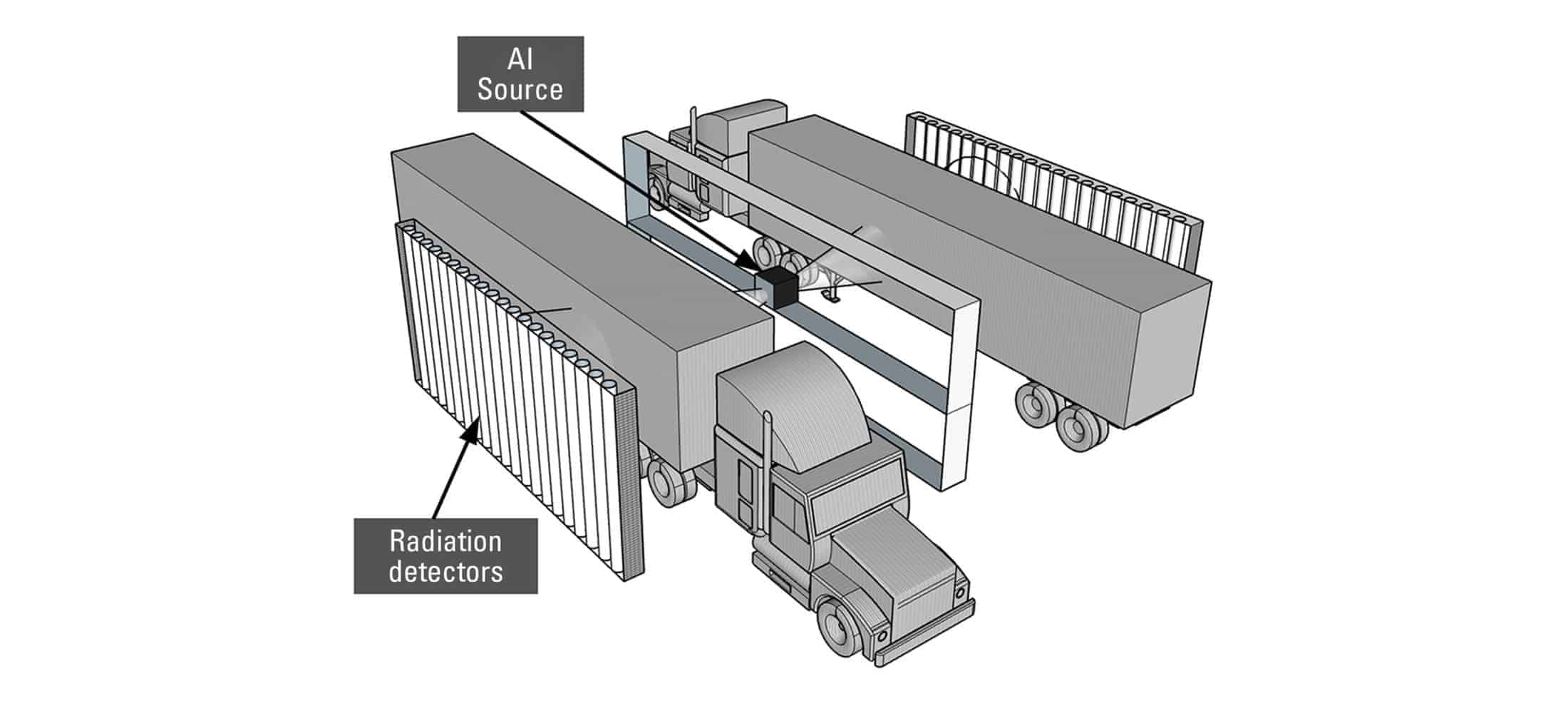
Nuclear nonproliferation: gamma-ray vision for ports and border crossings
The low-energy nuclear reaction could see through heavy containers hiding materials that could be turned into nuclear weapons.

The low-energy nuclear reaction could see through heavy containers hiding materials that could be turned into nuclear weapons.

A team of researchers primarily from the U-M Department of Nuclear Engineering and Radiological Sciences (NERS) and Oak Ridge National Laboratory (ORNL) are working to solve what has been called the “grand challenge” of nuclear security.
Detecting highly enriched uranium or plutonium, called special nuclear material, or SNM, behind barriers is challenging using the current methods of inspection, leaving ports and border crossings vulnerable as millions of shipping containers pass through each year.
Nuclear engineers have long considered a technique known as active interrogation as a promising method of detection. In active interrogation, the suspicious material is irradiated by penetrating radiation. Typically, this generates answering radiation from the SNM, but in this case, Jovanovic’s team is proposing to combine it with an imaging technique.
“Let’s say we want to create an image of the interior of the body, specifically to see an organ or tissue,” said Igor Jovanovic, NERS Professor and member of the research team. “They are normally behind barriers and so hard to see, but in a technique such as magnetic resonance imaging (MRI), we can use a magnetic field to induce a characteristic response to detect specific materials in tissue, and similarly, we can use X-rays to take a radiograph of the organ and reveal its geometric structure. An active interrogation source can serve both purposes.”
The current radiation sources used for active interrogation either need to produce energetic radiation or else the radiation can’t reliably get to the heart of the container. The problem is especially difficult to address when bad actors hide nuclear materials inside containers that are difficult to penetrate.
The research team proposes bombarding carbon with high-speed protons to produce highly penetrating gamma rays, which are a step up from X-rays.
The proton bounces off the carbon nucleus, causing the protons and neutrons to “wobble,” Jovanovic said. Shortly after, the nucleus releases that energy in the form of a gamma ray.
“We can then use beams of these photons to penetrate thick objects, take images of their interior, and induce the interior of those objects to emit radiation that gives off the identity of the material,” said Jovanovic.
Though the primary use of this method of active interrogation would be during inspection of thick cargo for the presence of special nuclear material, the reaction could also be used in industrial radiography or in the inspection of nuclear reactor spent fuel.
The paper on this research, titled, “12C(p, p)12C Reaction (Ep = 19.5–30 MeV) for Active Interrogation of Special Nuclear Material,” was recently published by the Physical Review Applied journal.
The lead author of the paper, Jason Nattress, is an alumnus of NERS and an ORNL Alvin M. Weinberg Fellow. Co-authors include Jovanovic, his current student Felicia Sutanto, and his former student Ming-Wei Lin. Sutanto is a NERS PhD candidate and a Livermore Graduate Scholar. Lin studied under Jovanovic at Penn State University and is now a professor at the National Tsing Hua University in Taiwan.